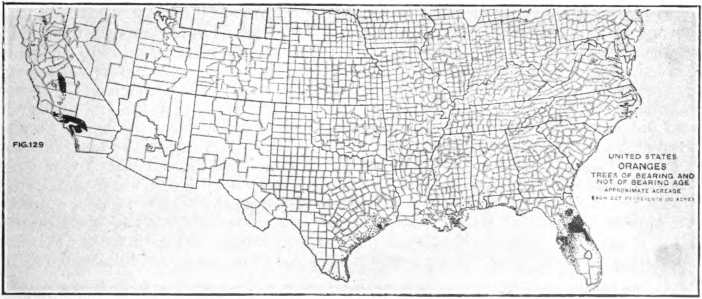granulate in the tank in four or five days, but this may be prevented by using a tank with a glass top exposing the honey to sunlight. Honey gathered from wild black mustard is stated to be amber-colored with an odor characteristic of the plant. In 1884 M. H. Mendleson, of Ventura, California, had one colony which gathered from an abundance of mustard bloom, while 199 gathered from the sages. This was an exceptional case, and would indicate that the bees preferred the nectar from sage. (Figs. 88 and 89.)
NAPA THISTLE (Centaurea melitensis). — Tocalote. First introduced at Napa, California, it has become common in grain fields and arable land throughout the state. The yellow flowers appear during the last of May, and in Sacramento County yield a light amber honey of good quality.
NETTLE, HEDGE. — See Hedge Nettle.
OLIVE. — See Pollen Plants.
OAK. — See Pollen Plants.
ONION (Allium Cepa). — Valuable for honey when grown for seed. In California most of the onion seed is raised in the Santa Clara and Sacramento Valleys and in San Benito County. The honey is amber-colored, and the peculiar onion odor and flavor almost disappear as it ripens. The flowers are white.
ORANGE (Citrus Aurantium). — Orange honey is nearly white or light yellow in color, has the fragrance of the bloom, and a most pleasant flavor. In Florida it is not as heavy as the honey from scrub palmetto, and it granulates in a few months after extracting. It is considered one of the finest honeys produced in the United States, but in Florida it is seldom obtained pure. In California it is very easy to obtain orange honey unmixed with any other honey, as sage ordinarily does not blossom until the orange trees have nearly ceased to bloom. The nectar is frequently very thin when first gathered, and naturally is thinner for a few days after irrigation; but toward the end of the flow, if the weather is warm, it becomes much thicker. When well ripened the honey is heavy, white, and excellent in flavor; but, as it usually granulates in a few months, many dealers prefer to buy sage honey. While orange bloom yields nectar in Florida, a greater amount per tree is secreted in California. The climate of California is more favorable for orange nectar secretion.
The commercial citrus fruits include the orange, lemon, grapefruit, and lime. Large areas are under cultivation in southern Europe, Asia, North America, and in the tropics. The trees flourish on a great variety of soils, providing they are well drained and the region is free from severe frosts. In the United States the

Fig. 90. — Acreage of citrus fruits in the United States. California has nearly two-thirds of the trees and produced in 1909 about three-fourths of the crop. (After Baker. Geog. World’s Agr.)